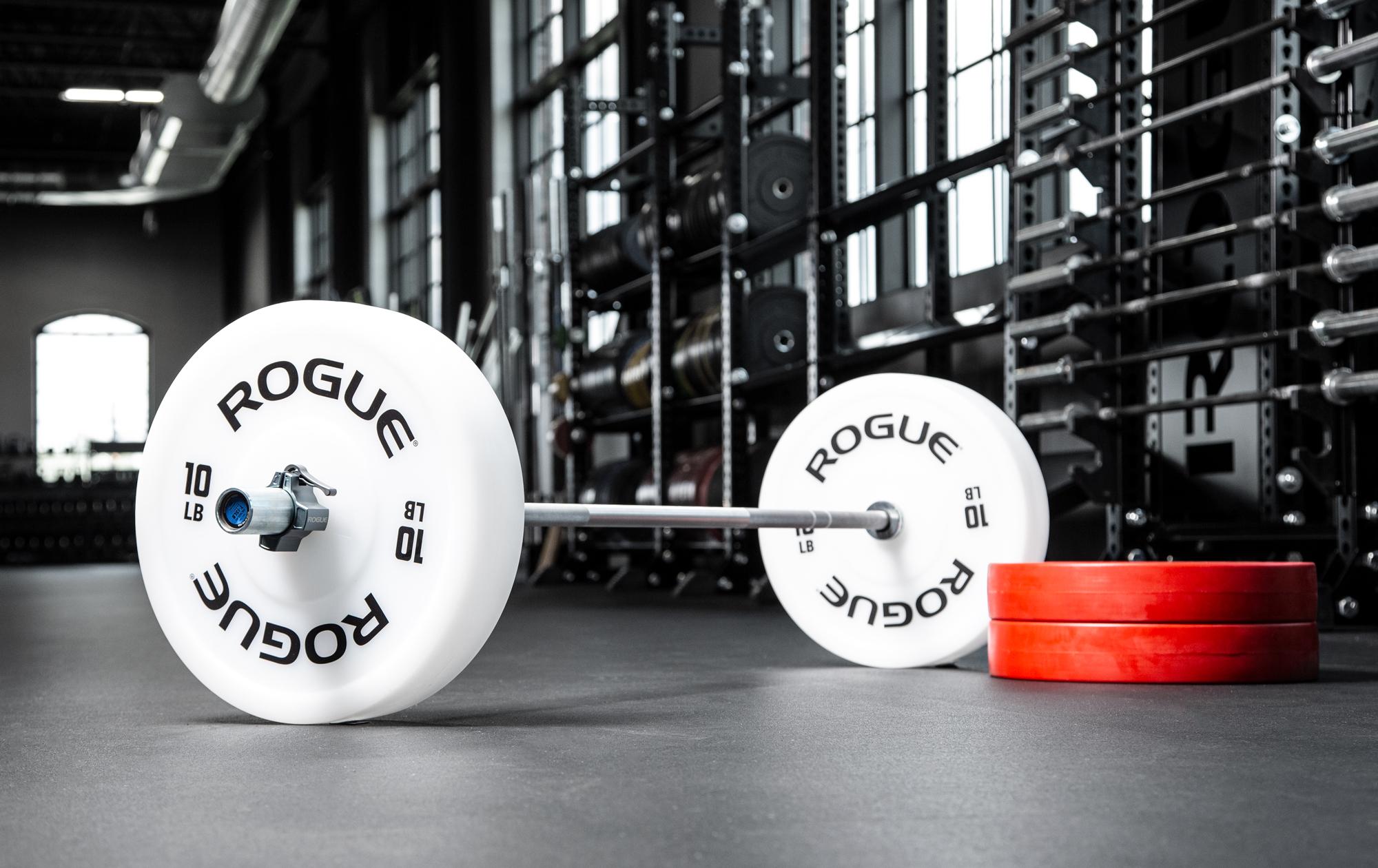REP fitness Equalizer plates vs Rogue technique plates
This is a comparison between the REP fitness Equalizer plates and the Rogue technique plates. Follow the links for more details.
Overview and review of the Rogue Technique plates
The Rogue technique plates will set you back about $125 - $160 dollars. These plates are especially good to use for beginning weightlifters. This overview has originally been published in the article "Which rogue plates to buy" which you can find on this blog.
What else to consider from Rogue
- Which belt to buy from Rogue
- Which barbell to buy from rogue
- Which rack to buy from Rogue over $1000
- Which rack to buy from Rogue for under $1000
- Which plates to buy from Rogue
- Which strength equipment to buy from Rogue
- Which conditioning equipment to buy from Rogue
- Which Equipment package to buy from Rogue
- Which accessory to get from Rogue
- Which jump rope to get from Rogue
- Which knee sleeve to get from Rogue
Overview of the technique plates
Technique plates are special plates which have the same diameter of 450mm than regular competition plates but at a much lower weight. This is achieved by using high-density polyethylene Plastic (HDPE). These are the right plates to teach beginners, juniors or getting rehabbing athletes back to lifting. These plates combined with a technique bar can lower the weight of the bar for a beginner to 15kg to enter the sport of Olympic weightlifting. If you work a lot with children or very unfit beginners, this is a good plate to add to your arsenal.
The technique plates are available in red and white in 2.5kg, 5kg, 5lb, and 10lb versions. They have the following specs:
- 450mm Diameter
- 50.2mm Center Hole Diameter
- Grooved edge for easier handling
Pros of the technique plates
Technique plates help to ease into the sport and to hone your lifts to perfection. If your gym or yourself are serious about Olympic weightlifting they will be a great addition to your arsenal to grind on technique without wreaking your body.
Cons of the technique plates
These plates have a very narrow and specialized use case. If you do not enter the realm of Olympic weightlifting you will probably only get very little use out of them.
Alternatives to the technique plates
Alternatives to technique plates are:
Fractional plates and change plates help you to work with lower denominations in work and to microload . In most cases you will get more use out of these for everyday training than out of technique plates.
Overview and review of the REP fitness Equalizer plates
This is an overview of the REP fitness Equalizer plates including pros, cons, and alternatives. The original was published under which plates to buy from rep fitness. Follow the links for more details.
Rep Equalizer iron plates $10
The REP Equalizer plates are a great option for your home gym, if you think that simple round iron plates are boring and too hard to pick up from the ground. These plates have a low entry price, interesting design, and can be very practical if you like them. The full specifications of these REP plates are:
Features:
-
Machine drilled center hole (not cast) for tight fit on bar.
-
Sand blasted and machined for smooth surface.
-
All surfaces rounded, no sharp edges.
-
Sandblast before painting to ensure no surface rust is painted over.
-
Powdercoated and baked for 1 hour for superior toughness and resistance to chipping.
-
Symmetrical grip holes for easy lifting off the ground, and for using individual plates in exercises.
-
Weight tolerance guaranteed within 2%
-
"X" centered in between grip holes on 45, 35, and 25, as pictured on main image.
-
255 lb set includes: (1) Pair of 45, 35, 25, 10, 2.5 lb plates. (2) Pairs of 5 lb plates.
-
275 lb set includes: (2) Pair of 45, 5 lb plates. (1) Pair of 25, 10, 2.5 lb plates.
Plate Dimensions (width/diameter)
-
2.5lb - 0.5"/6.25"
-
5lb - 0.75"/8"
-
10lb - 0.75"/9"
-
25lb - 1.5"/12.25"
-
35lb - 1.5"/14.25"
-
45lb - 1.5"/17.7"
A solid alternative to simple Olympic iron plates.
Pros of the Rep Equalizer iron plates
The pros of the REP Equalizer plates are:
-
Sleeve space
-
Holes
-
Iron sound
-
Price per kg
A big plus of Iron plates is that they take up less sleeve space on the bar compared to bumper plates. This makes them especially good for powerlifters as they can get more weight on the barbell than with bumper plates. If you have limited storing space and want to max out your barbell then these plates are a good choice.
The holes in these plates mean that they are easier to move around your gym than regular Olympic iron plates. You can also pick them up from the ground very easily. In the convenience department, these plates point big in day-to-day use.
Depending on your preferences these plates make the sound of clanging metal that some love so much. If you want to pump iron and like the good old Ronnie Coleman days, then these are the plates for you.
Another attractive feature of these plates is that they have a decent design even though they are at the lower range of the price per kg spectrum of REP fitness.
Cons of the Rep Equalizer iron plates
-
Iron
-
The Integrity of the plate is compromised
-
Higher injury risk
-
No color option
One of the disadvantages of this pate is that it is iron. This means it can corrode and also damages your floor and equipment when dropped from overhead. Iron plates also bear a higher injury risk as the metal won't give in when it comes into contact with skin or bone. It is a lot more likely to break the skin or a bone when you collide with an Iron plate than with a bumper plate.
As these plates have holes in them their integrity is compromised. This means that there are a lot more opportunities for the plates to crack or catch rust than with a smooth round bumper plate. They are also more likely to chip than a round Olympic iron plate.
Finally, you do not have color options with these plates except grey and black. Although these iron plates are easier to coat with a different color than bumper plates if DIY is your thing.
Alternatives to the Rep Equalizer iron plates
-
Rogue Olympic Iron plates
The REP Urethane coated equalizer plates are in my opinion the better choice as they are more forgiving on your equipment and body than the full iron plates. If you like the idea of plates with holes in them to make them easier to carry, go for the Urethane coat instead.
If you don't care about design and convenience and all you want is the most possible amount of weight for the cheapest price that you can fit on your barbell, then go with Olympic Iron plates. They are not as convenient as the Urethane plates but cheaper. You also might like to go retro and just focus on lifting the weights rather than how they look in your basement.
The Rogue 6 shooter plates follow the same idea as the Equalizer plates. The only difference is that the holes are round rather than hexagonal. If you are leaning more towards Rogue as a brand than REP fitness to build your home gym, but like the concept of easy transport iron plates, then the 6 Shooter is the option for you.
The Rogue Olympic Iron plates are the simplest version you can get of a plate from Rogue. Steel that fits on a barbell. Nothing more, nothing less.
If you want to be as cheap as possible then go with TITAN and load your cart up. They also have Iron plates in stock.
Conclusion for the Rep Equalizer iron plates
The REP Equalizer iron plates have a great design and are practical in use. If I liked them and were to buy some I would go for the Urethane coated ones instead as they are minimally more expensive but are easier on my skin and equipment when training. They will also last longer as they are not as susceptible to rust.


